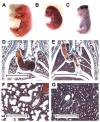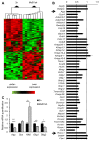Deletion of the App-Runx1 region in mice models human partial monosomy 21
- PMID: 26035870
- PMCID: PMC4457029
- DOI: 10.1242/dmm.017814
Deletion of the App-Runx1 region in mice models human partial monosomy 21
Abstract
Partial monosomy 21 (PM21) is a rare chromosomal abnormality that is characterized by the loss of a variable segment along human chromosome 21 (Hsa21). The clinical phenotypes of this loss are heterogeneous and range from mild alterations to lethal consequences, depending on the affected region of Hsa21. The most common features include intellectual disabilities, craniofacial dysmorphology, short stature, and muscular and cardiac defects. As a complement to human genetic approaches, our team has developed new monosomic mouse models that carry deletions on Hsa21 syntenic regions in order to identify the dosage-sensitive genes that are responsible for the symptoms. We focus here on the Ms5Yah mouse model, in which a 7.7-Mb region has been deleted from the App to Runx1 genes. Ms5Yah mice display high postnatal lethality, with a few surviving individuals showing growth retardation, motor coordination deficits, and spatial learning and memory impairments. Further studies confirmed a gene dosage effect in the Ms5Yah hippocampus, and pinpointed disruptions of pathways related to cell adhesion (involving App, Cntnap5b, Lgals3bp, Mag, Mcam, Npnt, Pcdhb2, Pcdhb3, Pcdhb4, Pcdhb6, Pcdhb7, Pcdhb8, Pcdhb16 and Vwf). Our PM21 mouse model is the first to display morphological abnormalities and behavioural phenotypes similar to those found in affected humans, and it therefore demonstrates the major contribution that the App-Runx1 region has in the pathophysiology of PM21.
Keywords: Aneuploidy; Learning and memory; Motor coordination; Mouse model.
© 2015. Published by The Company of Biologists Ltd.
Conflict of interest statement
The authors declare no competing or financial interests.
Figures





References
-
- Besson V., Brault V., Duchon A., Togbe D., Bizot J.-C., Quesniaux V. F. J., Ryffel B. and Herault Y. (2007). Modeling the monosomy for the telomeric part of human chromosome 21 reveals haploinsufficient genes modulating the inflammatory and airway responses. Hum. Mol. Genet. 16, 2040-2052. 10.1093/hmg/ddm152 - DOI - PubMed
Publication types
MeSH terms
Substances
Supplementary concepts
LinkOut - more resources
Full Text Sources
Other Literature Sources
Molecular Biology Databases
Research Materials
Miscellaneous

